When we visited Hanoi, the weather was less than stellar. Most days were a mixture of clouds, smog, and rain – not exactly the kind of weather that encourages you to spend time outside. Lucky for us and anyone else who lands in the Vietnamese capital greeted by poor weather, there are plenty of museums to occupy your time on a rainy day. Here’s a brief rundown of the five museums we visited in Hanoi, including useful information such as the address, opening hours, and cost:
If you’re heading to Vietnam, you’ll need to get your visa before you arrive. For those who don’t have the time to go to a consulate in person, we recommend Vietnam Visa to help you arrange everything.

Ho Chi Minh Museum
19 Ngoc Ha St, Ba Dinh District
8 AM-4:30 PM Tues-Thu; Sat & Sun
8 AM-12 PM Mon & Fri
25,000 dong ($1.25)
Not to be mistaken with the Ho Chi Minh Mausoleum, which features the embalmed body of the former Communist leader, the museum is located around the corner and is free of corpses. It should be noted that the hours of the museum recently changed, so don’t trust your old version of Lonely Planet or travel blogs from before 2013. While most foreigners will see this museum simply as a propaganda tool to glorify Uncle Ho and the Communist regime in Vietnam, we went in viewing it more as an obscure, artsy, slightly biased take on history. Doing so will make your visit much more enjoyable. Also, don’t go in planning to learn very much about Ho Chi Minh or Vietnam, as many of the displays feature either poor English or none whatsoever. That being said, you will see plenty of photos and relics from the renowned Vietnamese leader.
Many of the exhibits are downright strange, such as the one area that is meant to represent Uncle Ho’s hideout in a cave and the inside of his brain at the same time. Most of the place seems more like post-modern art meets government propaganda, and it’s definitely unlike any museum we’ve ever seen. It’s hard to see how an over-sized table along with huge pieces of plastic fruit represents Uncle Ho and young people, but someone must have seen the connection.
For the cheap price and the funky set-up of the museum alone, I’d say it’s worth a trip to at least check it out. Plus, if you’re into seeing dead dictators, you can combine a visit here with a stop at the mausoleum. There are a few other things to see in the area, as well, so you can plan an entire morning to explore here. -Sasha

Women’s Museum
6 Lý Thường Kiệt, Hang Bai Ward, Hoàn Kiếm
8 AM-5 PM every day
30,000 dong ($1.50)
Established in 1987 and opened to the public in 1995, the Women’s Museum has four floors all with a different theme. There are descriptions in Vietnamese, English and French, as well as videos with English subtitles. Women in Family is the theme of the 1st floor and visitors can see the traditional clothing for all the different minorities, read about the different marriage customs for each group, and learn about child birth rituals and customs. There’s even a short video showing the wedding day for one of the minority groups. The 2nd floor is for the rotating exhibitions in which they’ve had over 40 since they opened. They have included Japanese traditional dolls, Images of Love and Courage, Peaceful Place (women trafficking), Vietnamese women’s traditional jewelry and Uncle Ho with the Vietnamese women’s liberation’s movement. During our visit we saw Worshiping Mother Goddess, which is a pure Vietnamese folk belief. People worship the Mother Goddess to pray about their concern of daily life and desires for good health and fortune. The 2nd floor also includes an exhibition about street vendors. It tells the story of women from the villages who come to Hanoi or other bigger cities to sell various items in hope of making more money to benefit their families. Women have always played a major role in the defense of the Vietnamese nation, and the 3rd floor memorializes these important women. Beginning as far back as 40 AD and ending with the ‘Destiny of Today’s Women’, visitors can read many touching stories about the important Women in History and all the sacrifices they’ve made. Finally, the 4th floor is Women in Fashion. It includes traditional dresses called “Ao dai” in Vietnamese, jewelry and ornaments, and explains the tradition of teeth lacquer and giving betel as a wedding gift. It’s a gender museum as well as a center for promoting equality, peace and development.
Being a woman, I particularly enjoyed this museum. As I don’t have my own family, I couldn’t relate to the Women in Family exhibit, but it was interesting to learn about all the different ethnic rituals of marriage and child birth. Most women marry and have children as teenagers, something I could never imagine. I found the stories of the street vendors to be the most touching. Most of them have husbands who suffered an accident and can no longer work or they simply don’t make enough money to support themselves and their children. These women are from the countryside but must come to the city to live in a dorm with 10-12 other women and only go home on the weekends, if they’re lucky. Most only make it home once a month. They wake up around 4am everyday to go to the market. Once they’ve finished their shopping, they walk the streets of Hanoi trying to make sales. If they have a good day they can hopefully finish by 5pm, but sometimes they can’t stop until 7 or 8pm. What they do is illegal so they must constantly live with the fear of being chased by the police. One woman described it as ‘terrifying,’ adding that she’s lucky she hasn’t been hit by a car in the process. Another woman talks about how her husband reassures her that it’s only for a few years, until their children finish school and then they can live together again. She says it’s a shame having to live away from each other while they’re young, but they have no choice. This exhibit combined with the history exhibit reminded me how truly lucky I am to have all the opportunities I’ve been given. It was a very humbling experience to see photos of women working out in the rice paddies while carrying their babies on their backs. I would highly recommend this to anyone. -Rachel
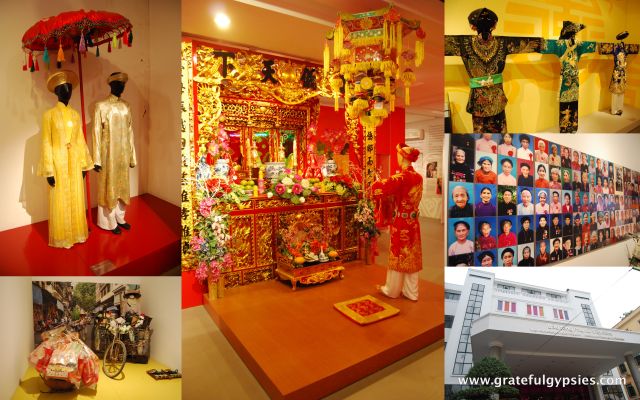
Museum of Ethnology
Nguyen Van Huyen Road, Cau Giay District
8:30 AM-5:30 PM Tues-Sun
40,000 dong ($2)
Did you know that Vietnam has 54 ethnic groups? Neither did we. Although this museum is a bit farther away than the others (about 7 km outside of the Old Quarter), it was definitely our favorite. There’s both an indoor and outdoor exhibit, descriptions are detailed and tri-lingual (Vietnamese, English, and French), and it provides a fascinating glimpse into the culture of the various ethnic groups.
Inside, you’ll find various artifacts and displays on the clothing, housing, festivals, religion, and much more for many of the larger groups. In addition, there are also plenty of videos playing on a loop to give you a true glimpse into the unique culture of each group. The real highlight of the museum, however, can be found outside. Here you’ll find full-scale replicas of traditional houses from all across the country, including a Ban Na rong (communal) house and an E De long house. There’s also a Gia Rai tomb which features some very suggestive statues that serve as fertility symbols. To top it all off, there’s an excellent restaurant/cafe on the museum grounds, where you can get a nice meal and a cup of coffee (or a cold beer). The restaurant supports disadvantaged youths by training them to eventually work in the service industry, so your meal also goes towards a good cause.
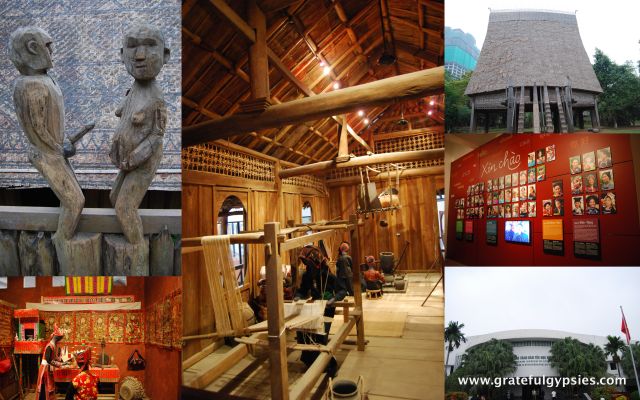
There’s a rotating exhibit here, and we were lucky enough on our visit to catch the country’s first ever sex-ed exhibit. It’s the perfect way for parents of young kids to avoid that awkward “birds and the bees” talk – just take them to the museum and set them loose! There are great quotes from young Vietnamese schoolkids all over the place, including:
“In my class, we often tease each other by touching girls’ breasts and beating the lower part of boys. When doing this with girls we say ‘nasty jelly’.”
“We decided that when we love each other, we can do anything except ‘making shape’ (having sex).”
In addition, you’ll find some ridiculous displays made from condoms…
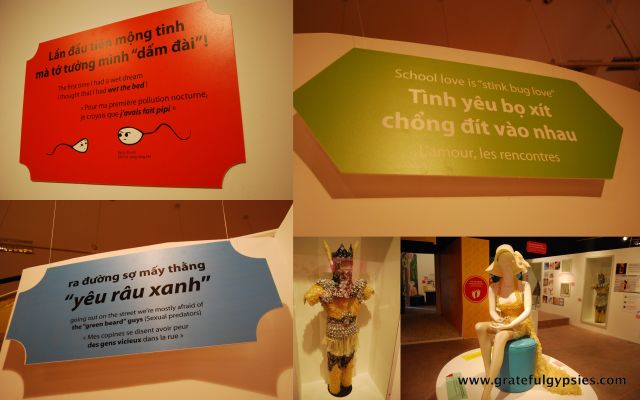
All in all, a trip to the Ethnology Museum should be high on anyone’s list when visiting Hanoi. Don’t let the distance throw you off, either – you can take the public bus #14 from the north side of Hoan Kiem lake for just 5,000 dong each way. -Sasha
Museum of Vietnamese History
1 Phạm Ngũ Lão, Tràng Tiền, Hoàn Kiếm
8-11:30 AM; 1:30-4:30 PM
20,000 dong ($1); 15,000 dong camera fee, 30,000 dong video camera fee
The museum is located in an old French colonial building that was built in 1932, and it was opened to the public in 1958. It’s not very big; only 2 stories and all the descriptions are in Vietnamese. So unless you hire a guide that speaks your language (they are available for a small fee), you’ll just have to guess from the pictures. The museum covers every period of the country’s history from pre-historic times up to now. The 1st floor begins with teeth of humans and animals, tools and models of caves and dwelling places of the early Hoa. From the first stages of national building, it goes on to struggles against Chinese domination. From there you’re guided through all the various dynasties of the country leading up to the French colonization and sub-sequential anti-movement and revolution. After that there’s quite a bit of Champa stone carvings to be seen. I particularly enjoyed all the art and the carvings, but as I said there are only Vietnamese descriptions. As such, we went through it very quickly. You’ll certainly get more out of it if you hire a guide, but I recommend it either way, especially if the weather isn’t great. -Rachel
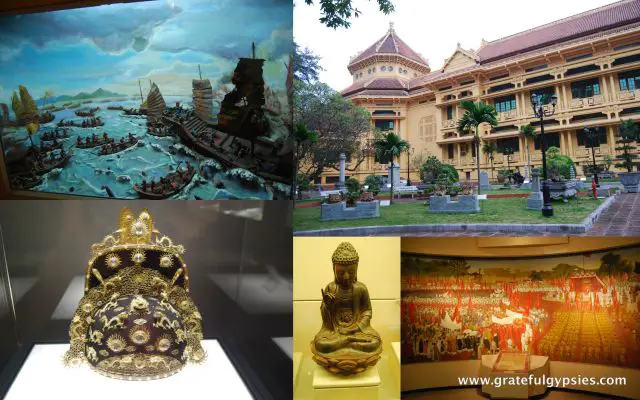
Hoa Lo Prison
1 Hoa Lo St., Hoan Kiem
8 AM-5 PM every day
20,000 dong ($1)
Often referred to as the “Hanoi Hilton,” a term coined by American POWs during the war, this historic site was once used by the French to house political prisoners. At its peak use by the French, the prison was extremely overcrowded, with inmates often being tortured or executed. After Vietnam attained its independence in 1954, the prison remained as an educational center and a reminder of the city’s turbulent past.
During the Vietnam War (which Vietnamese call, not surprisingly, the “American War”), American pilots who had been shot down were kept here. Torture was common here, including rope bindings and extended solitary confinement. The exhibits, however, display happy American prisoners playing basketball, decorating Christmas trees, and writing postcards home. Don’t go into this or any other war related museum in Vietnam expecting anything other than a completely one-sided version of the story, because that’s precisely what you’ll get. Highlights of the Hoa Lo prison include some artifacts from John McCain, who spent some time here as a POW, and a full French guillotine. -Sasha
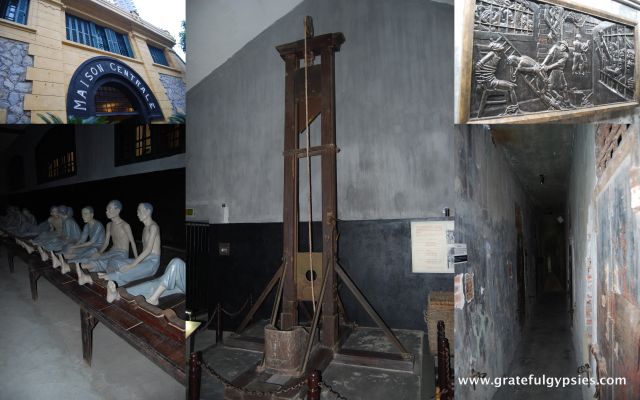
These are just some of the many museums that Hanoi has to offer, and you could easily spend 3-4 days exploring them all.
Hanoi Summary
Transport: We took the overnight bus from Sapa straight to Hanoi. It took about 10 hours and we didn’t get much sleep, but it was far cheaper than the train at $15 each.
Get Around: If you’re staying in the Old Quarter, you can cover most of the sights in Hanoi on foot. Of course, if you’re feeling lazy, there are plenty of options – cyclos, motorbikes, and normal taxis.
Accommodation: We stayed at the Hanoi B&B Hostel in a private double room. It was $18 a night when we visited and included free breakfast every morning, plus coffee and tea whenever you wanted it. We really enjoyed our stay here, and could recommend it for anyone on a budget who still wants a nice place.
Activities: As you can guess from this post, we hit a lot of museums. We also spent a lot of time getting lost in the Old Quarter.
Food & Drink: There’s no shortage of amazing food in the Vietnamese capital. We enjoyed a few nice meals in restaurants (Vietnamese and Indian), but we had most of our meals in the street. From beef pho, to banh mi sandwiches, to incredibly tasty bun cha, street food is where it’s at in Hanoi. As far as drinks go, no stop in Hanoi is complete without a night full of bia hoi, or draft beer. You can get a glass for 5,000 dong ($0.25 US) at street-side bars, so it’s no wonder we had some wild nights.
Recommended Time: We stayed in the Vietnamese capital for five nights, as we needed a few days to relax after a whirlwind three months in the US and an intense week back in China, but you could easily do everything we did in a few days less.
Total Cost: We spent $227 in Hanoi. This does not include our bus tickets, which we counted as part of our budget in Sapa ($30 for the two of us). Considering that it is a capital city and we stayed there five nights, it’s safe to say that Hanoi is a very budget-friendly travel destination.



